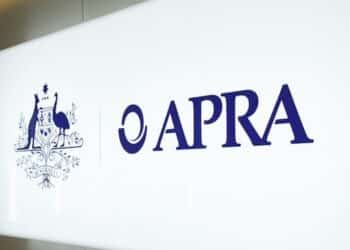Some of the clients impacted by the collapse of Dixon Advisory are set to receive a dividend payment, though the Australian Financial Complaints Authority (AFCA) said this is separate from its work on “investigating and resolving open Dixon complaints”.
“The action of declaring and distributing a dividend will not impact AFCA’s consideration of open complaints,” the complaints authority noted in an update on the Dixon page on its website.
“However, if AFCA determines that there was inappropriate personal finance product advice by a former advisor of Dixon which resulted in loss to the consumer, the award of any compensation will consider any distribution received from the administration.”
The news follows AFCA officially expelling Dixon from the scheme at the end of June 2024, which marked an end to the ability of clients that lost money to lodge complaints, with a final tally of 2,773 complaints.
ifa understands that dividend payments would likely be made in 2025, however there has been no confirmation on the date or the scope of funds available to former client creditors.
Could this reduce the burden on the CSLR?
While it is possible that the dividend payments would reduce the amount that would be levied against the advice subsector through the Compensation Scheme of Last Resort (CSLR), there is no guarantee that this reduction will be large enough to make a substantial difference.
While an exact figure is not yet clear, it will certainly be a far cry from the estimated $135 million that will be apportioned to advisers to cover just the Dixon-related CSLR payments.
Speaking with ifa, Financial Advice Association Australia (FAAA) general manager policy, advocacy and standards, Phil Anderson said that the dividend payments have the potential to reduce some CSLR payouts.
“The intent of the legislation is that a benefit that was paid as a result of a payment from the licensee that was in administration would be offset against the benefit paid by the CSLR,” Anderson said.
“It hasn’t been tested yet in terms of all those situations, so receipt of proceeds from a class order, it still needs to be tested as to whether that would fit within the intent of the law.”
Given the CSLR has only been in operation since April and, as Anderson noted, many scenarios have yet to be practically applied, all that parties involved can rely on is the legislation – in this case, section 1067 of the Corporations Act.
This section of the act breaks down the amount of compensation that an individual can be paid through the CSLR.
Specifically, the compensation must be “equal to the lower” of $150,000 or the “amount payable to the person in accordance with the relevant AFCA determination, less:
(i) any amount paid to the person in accordance with the relevant AFCA determination, including any partial payments or any payments made to the person as an unsecured creditor of a Chapter 5 body corporate for the matters covered by the determination; and
(ii) any compensation to which the person is eligible under any other statutory compensation scheme for the matters covered by the determination; and
(iii) any other payments made to the person of a kind prescribed by regulations made for the purposes of this subparagraph.”
Anderson added that, essentially, this means any payments should come off the AFCA determination amount, but would only reduce the CSLR payment if it brought the amount owed under the $150,000 cap.
“If someone had an AFCA determination where they were owed $300,000 and they got $100,000 from the company in liquidation, they would still have a debt of $200,000 and under section 1067, they would get the $150,000,” he said.
“So, the proceeds don’t come off the $150,000, the proceeds come off the total amount that’s owed, and then they get the first $150,000.”




It wold be interesting to know if any of the former Directors and Investment Committee Members of Dixon Advisory, who also had an interest as URF shareholders, are included as Former Clients of Dixon Advisory and will be included in the dividend payout.
As of today there have been 27 Dixon Advisory determinations published by AFCA on their website. All have been found in favour of the complainant. They average approximately $130,000 per case and are all damning in the findings against Dixon. These findings need to be highlighted by the Financial Advice profession to bring appropriate pressure for further action to be taken against Dixon Advisory and E&P.. The people at the top of these organisations need to be held fully accountable for their actions.
Think about this we are effectively paying for a company which has failed which we all have no ownership and are being made to pay for their losses while Evan the company that caused the loss walks away. I’m sure this is government thief or appropriation of property which is legal think about it they are sending us all a bill for a business which we do not own.
Anyone that has done law or business etc ‘Pty Ltd’ is short for ‘proprietary limited’. It refers to a private company where shareholders have limited legal responsibility for the company’s debts. The ‘proprietary’ in ‘proprietary limited’ means that a limited number of shareholders own the shares in the company.
ASIC are chasing loss money caused by losses from advice from that company. It has nothing to do with anyone else.
There has been so much talk around the whole Dixon and E&P saga, with no appropriate action being taken against the perpetrators. I suggest the Financial Advice Industry organise a protest outside the Melbourne and Sydney offices of E&P. Maybe that will get some attention.
Great idea. We can even take a leaf out of Extinction Rebellion’s strategy & chain ourselves to the door. Better still, we could all make up sandwich boards and protest out the front of ASIC’s offices. Alas, Advisers are a pretty conservative bunch & not one thing will happen. They’d rather whinge & whine than take take direct action.
Perhaps we can simultaneously deliver expense claims to E&P to cover the extra cost of being a licensed adviser. While we abide by the rules, and do our best to earn an honest living our hard earned money is being given to these clowns. It beggars belief that existing clients of E&P would stand by and accept the wilful and intentional disregard for ethical behaviour, let alone give them a second chance in mismanaging their wealth and giving them more fees for the privilege. Whilst E&P put on an act of ‘promoting’ all things ESG, the question at hand is where is the ‘G’, because it appears responsible corporate governance at E&P is non existent. E&P seem selfishly focused on lining their own pockets. They have consistently avoided ‘doing the right thing’ at every step of the way, walking away from any responsibility for this mess whatsoever. E&P’s behaviour to deceive and disregard the financial advice industry for their own benefit appears to be part of the corporate strategy. Perhaps they can continue their shady practices out of the public eye once they de-list from the ASX.
How about the Financial Planning Associations talking to Four Corners about this? I’m sure there should be enough interest in running a story.
Brilliant. We might see some action then
The taxpayers fund ASIC under rules established by politicians. ASIC proved to be incompetent in supervising Dixon Advisory, and maybe the rules were inadequate too. If losses have resulted they should be made good by the taxpayers, i.e. the Government, not by a small number of individuals, the other financial advisers. Russell Tym.
E&P [I think parent co] will probably benefit from the dividend as well. How can any person think this is fair to anyone?? If an accountnat does th wrong thing there is no CSLR on their members, 0r a doctor or a solicitor or a plumber the list goes on we are the ONLY indiustry this applies to what an absolute farce I for one will be cavassing my MP nad if they don’t work towards removing this I will be making my vote count.
This dividend should be paid to CSLR and be equally deducted from the advisers who are now being asked to pay up to $2,000 each for something outside of their control given that the Dixon customers have received compensation from parties unrelated to the product owner. Why does the governement place this industry burden on advisers when it should levy the product providers as much smaller % of FUM for a scheme.
Many people left financial advising because of the government getting it so wrong with their requirements. Now there is a shortage. This CSLR is just another thing they are getting wrong. The question is, do I throw in the towel and quit and find another occupation or do I stick it out and wait for sense to prevail? I DO NOT WANT TO PAY ANYTHING for Financial Planners doing the wrong thing by their clients. This is not my doing. None of my clients think I should be paying for this either. We are not a CASH COW for fraudsters.
Asking myself the same thing, should I throw in the towel….. sick of being abused by these stupid politicians
Pollies will come and go, but your clients will be here for the long term, so just ignore the pollies, they don’t know much about anything.
There is no minimum education for pollies, they arent very professional at all, as a matter of fact a lot of them are just quite dim.
They just feather their nest whilst they can, they don’t care about anything except votes and putting forward personal agendas.
So you can outlast those losers, and be a successful planner at the same time.
If you are still here after what we have been through over the past 10 years, then you should stay as you have been through the worst times already.
Pollies comments are like facebook troll comments, usually made with no thought and not to be given the time of day.